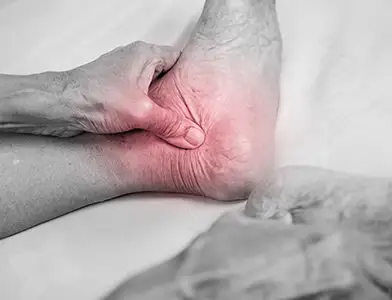Cramping of the Feet: Causes, Remedies, and Prevention

Foot cramping involves sudden, painful muscle contractions in the foot. These cramps can disrupt sleep and cause discomfort. They often occur in the arch, near the toes, or on the top of the foot. Various factors contribute to foot cramping, such as a sedentary lifestyle, excessive exercise, improper footwear, dehydration, or nutritional deficiencies. Identifying the root cause is crucial for effective treatment.
Understanding Foot Cramping
Foot cramping can be a distressing experience, causing sudden, involuntary muscle contractions in the foot that can be painful and disruptive. By understanding the nature of foot cramping and recognizing its common symptoms, individuals can better manage and prevent these occurrences.
What is Foot Cramping?
Foot cramping refers to the involuntary tightening of muscles in the foot, leading to discomfort and pain. This condition can occur in various areas of the foot, including the arch, toes, or top of the foot. Understanding the mechanisms behind foot cramping can help individuals address and alleviate these episodes effectively.
Common Symptoms
- Tightness in the foot muscles
- Pain or discomfort during movement
- Sudden onset of cramping
- Difficulty bearing weight on the affected foot
Causes of Foot Cramping
Foot cramping can be caused by various factors, including:
Sedentary Lifestyle
- Lack of physical activity
- Prolonged sitting or standing
Excessive Exercise
Engaging in vigorous physical activity without proper conditioning or rest.
Footwear Issues
Wearing shoes that are too tight, have inadequate support, or are worn out.
Dehydration
Inadequate fluid intake or excessive sweating without replenishing fluids.
Nutritional Deficiencies
- Lack of essential vitamins and minerals
- Imbalanced diet
Alcohol Consumption
Excessive alcohol intake leading to dehydration and mineral imbalances.
Pregnancy
Physiological changes and increased weight contributing to foot cramping.
Lifestyle Changes to Prevent Foot Cramping
Regular Exercise
Regular physical activity, such as walking, cycling, or swimming, can improve circulation and muscle strength in the feet. Incorporating exercises that target the muscles in the feet and calves, like calf raises or toe curls, can help prevent cramping.
Balanced Diet
Maintaining a balanced diet rich in vitamins and minerals is essential for overall foot health. Consuming foods high in potassium, magnesium, and calcium, such as bananas, leafy greens, and dairy products, can help prevent nutrient deficiencies that may contribute to cramping.
Avoiding Long Periods of Inactivity
Prolonged sitting or standing can lead to muscle fatigue and cramping in the feet. Taking regular breaks to stretch, walk around, or perform simple foot exercises can help improve circulation and alleviate tension.
Stress Management
Stress and anxiety can manifest physically, potentially leading to muscle tension and cramping in the feet. Practicing relaxation techniques like deep breathing, meditation, or yoga can help reduce stress levels and promote overall foot health.
otassium, calcium, or magnesium can contribute to muscle cramping, including in the feet. Consuming a varied diet with adequate nutrient intake can help prevent cramps due to deficiencies.
Frequently Asked Questions (FAQs)
What causes cramping of the feet?
Foot cramps can be caused by a variety of factors, including peripheral neuropathy, dehydration, muscle fatigue, poor circulation, nerve compression, and electrolyte imbalances. Chronic conditions such as diabetes or peripheral artery disease can also contribute to foot cramps.
How is cramping of the feet diagnosed?
Diagnosis involves a comprehensive medical history, physical examination, and possibly diagnostic tests such as blood tests to check electrolyte levels, nerve conduction studies, and imaging tests to identify underlying causes of the cramping.
Is cramping of the feet a serious condition?
Occasional foot cramps are usually not serious, but frequent or severe cramps may indicate an underlying condition such as peripheral neuropathy or poor circulation and should be evaluated by a healthcare professional.
Can peripheral neuropathy be a cause of cramping of the feet?
Yes, peripheral neuropathy can cause muscle cramps, including in the feet. Nerve damage from conditions like diabetes can lead to muscle dysfunction and cramping.
Should I see a specialist for cramping of the feet?
Yes, if you experience frequent or severe foot cramps, it is advisable to see a specialist such as a neurologist, podiatrist, or pain management expert. They can provide a thorough evaluation and recommend appropriate treatments.